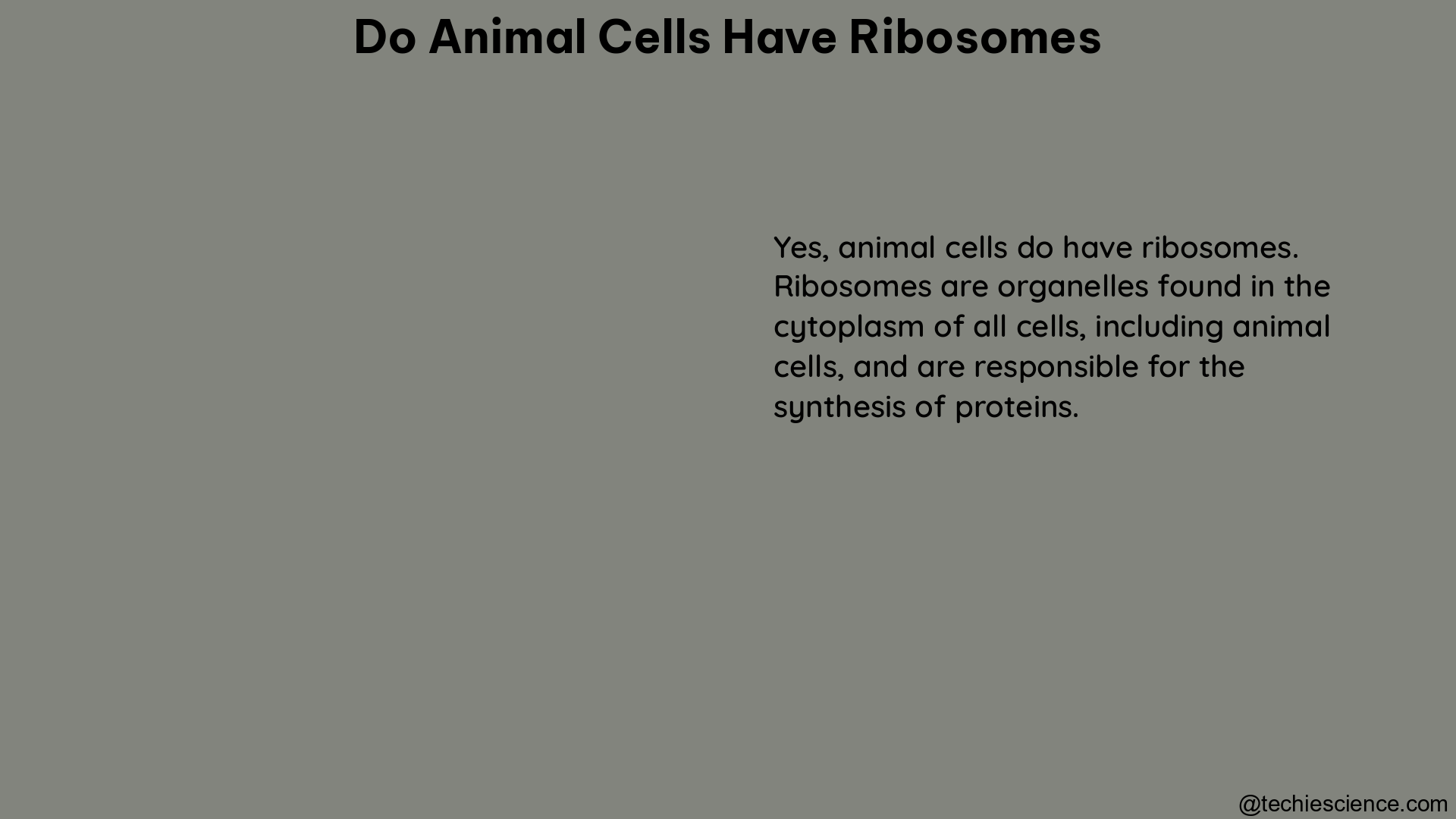Animal cells are eukaryotic cells that possess a well-defined nucleus and membrane-bound organelles, including ribosomes. Ribosomes are essential cellular components responsible for the synthesis of proteins, which are the building blocks of life. In this comprehensive guide, we will delve into the intricate details of ribosomes in animal cells, their structure, function, and the latest advancements in their study.
The Importance of Ribosomes in Animal Cells
Ribosomes are found in both prokaryotic and eukaryotic cells, including animal cells. These organelles play a crucial role in the process of protein synthesis, where they facilitate the translation of messenger RNA (mRNA) into functional proteins. Proteins are essential for a wide range of cellular processes, such as structural support, enzymatic activity, signaling, and transport.
In animal cells, ribosomes are primarily responsible for synthesizing proteins that function within the cytosol or pass through the endomembrane system, which includes the endoplasmic reticulum (ER) and Golgi apparatus. These proteins are essential for the proper functioning and maintenance of the cell.
The Structure and Composition of Ribosomes in Animal Cells

Ribosomes in animal cells are composed of two subunits: a larger subunit and a smaller subunit. These subunits are made up of ribosomal RNA (rRNA) and proteins. The larger subunit is responsible for the catalytic activity of the ribosome, while the smaller subunit is involved in the recognition and binding of mRNA.
The nucleolus, a round structure within the nucleus, is responsible for the production of ribosomes. The rRNA molecules are synthesized in the nucleolus, and the ribosomal proteins are imported from the cytoplasm. The assembly of the ribosomal subunits occurs in the nucleolus, and the completed ribosomes are then transported to the cytoplasm or the ER, where they can participate in protein synthesis.
Ribosomes in the Cytoplasm and Endoplasmic Reticulum
Ribosomes can be found in two distinct locations within the animal cell: freely suspended in the cytoplasm or bound to the endoplasmic reticulum (ER).
-
Cytoplasmic Ribosomes: Cytoplasmic ribosomes are responsible for the synthesis of proteins that function within the cytosol or are destined for export from the cell. These ribosomes are not associated with any membrane-bound organelles and can move freely throughout the cytoplasm.
-
ER-bound Ribosomes: Ribosomes can also be found attached to the rough endoplasmic reticulum (rER), a specialized region of the ER. These ER-bound ribosomes are responsible for the synthesis of proteins that are destined for the endomembrane system, such as those that will be transported to the Golgi apparatus, secreted from the cell, or incorporated into the cell membrane.
The location of the ribosomes within the animal cell determines the fate of the proteins they synthesize. Cytoplasmic ribosomes produce proteins that remain in the cytosol, while ER-bound ribosomes synthesize proteins that will be processed and transported through the endomembrane system.
Advances in the Study of Ribosomes in Animal Cells
Recent advancements in research techniques have provided new insights into the study of ribosomes in animal cells. One such technique is Ribo-ITP (Ribosome Immunoprecipitation and Transcript Profiling), which allows for the accurate measurement of ribosome occupancy at the single-cell level.
A study using Ribo-ITP revealed that ribosome occupancy can be accurately measured from as few as 100 human cells. This technique allowed for the detection of an average of 5,064 genes per cell, with a median of 48,017 unique molecules originating from the coding regions of transcripts. This highlights the sensitivity and accuracy of modern methods for studying ribosome function in animal cells.
Furthermore, the use of advanced microscopy techniques, such as cryo-electron microscopy (cryo-EM), has provided unprecedented insights into the structural details of ribosomes. Cryo-EM has enabled researchers to visualize the three-dimensional structure of ribosomes at near-atomic resolution, shedding light on the intricate mechanisms of protein synthesis.
Conclusion
In summary, animal cells do possess ribosomes, which are essential organelles responsible for the synthesis of proteins. These ribosomes can be found either freely suspended in the cytoplasm or bound to the endoplasmic reticulum, with each location serving distinct functions. The nucleolus is responsible for the production and assembly of ribosomes, which are then transported to their respective locations within the cell.
Advancements in research techniques, such as Ribo-ITP and cryo-EM, have provided new insights into the study of ribosomes in animal cells, allowing for the accurate measurement of ribosome occupancy and the visualization of their intricate structural details. Understanding the role and function of ribosomes in animal cells is crucial for advancing our knowledge of cellular processes and their implications in various biological and medical fields.
References:
– Quizlet: Biology EOI
– Quizlet: Chapter 7 Homework
– Ribosome Structure and Function
– Cells Study Guide
– Ribo-ITP: Ribosome Occupancy Profiling

Hello, I am Sugaprabha Prasath, a Postgraduate in the field of Microbiology. I am an active member of the Indian association of applied microbiology (IAAM). I have research experience in preclinical (Zebrafish), bacterial enzymology, and nanotechnology. I have published 2 research articles in an International journal and a few more are yet to be published, 2 sequences were submitted to NCBI-GENBANK. I am good at clearly explaining the concepts in biology at both basic and advanced levels. My area of specialization is biotechnology, microbiology, enzymology, molecular biology, and pharmacovigilance. Apart from academics, I love gardening and being with plants and animals.
My LinkedIn profile-